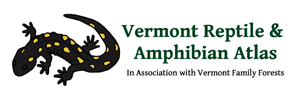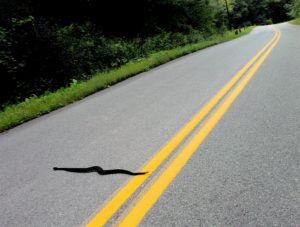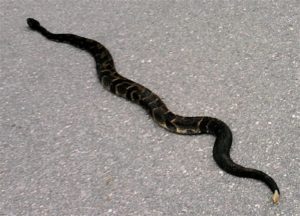Crotalus horridus
Identification 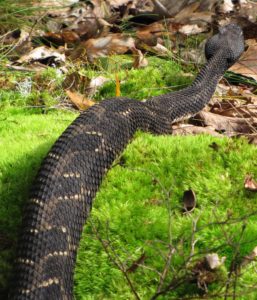
The Timber Rattlesnake has black W-shaped cross bands on a tan, yellow, or dark brown background. They have a black tail and the rattle on the end of the tail is a yellowish-tan color. Timber Rattlesnakes may have a yellow head, in which case they generally have a brightly patterned body, or they may have a black head, in which case they have a darker patterned body.
The rattlesnake is a thick snake usually 2-4 feet in length (the longest documented in Vermont is 54 inches), with heavily keeled scales.
This is Vermont’s only venomous snake. It is not at all aggressive but it should not be handled.
Get more detailed identification and life history information by downloading the chart here.
You can learn more about this species and see some video footage by checking out this short clip or this longer focused clip on the species from our Rattlers, Peepers & Snappers DVD.
Vermont’s Rattlesnake Response Program is a FREE service that aims to protect Vermont residents and Timber Rattlesnakes by safely moving nuisance rattlesnakes away from private and public property. Learn more at this page.
Range/Habitat
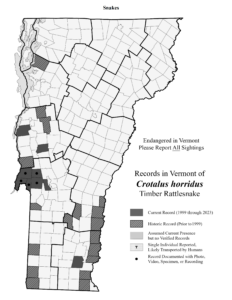
[ click image to zoom | download printable PDF ]

[ click image to zoom | download printable PDF ]
